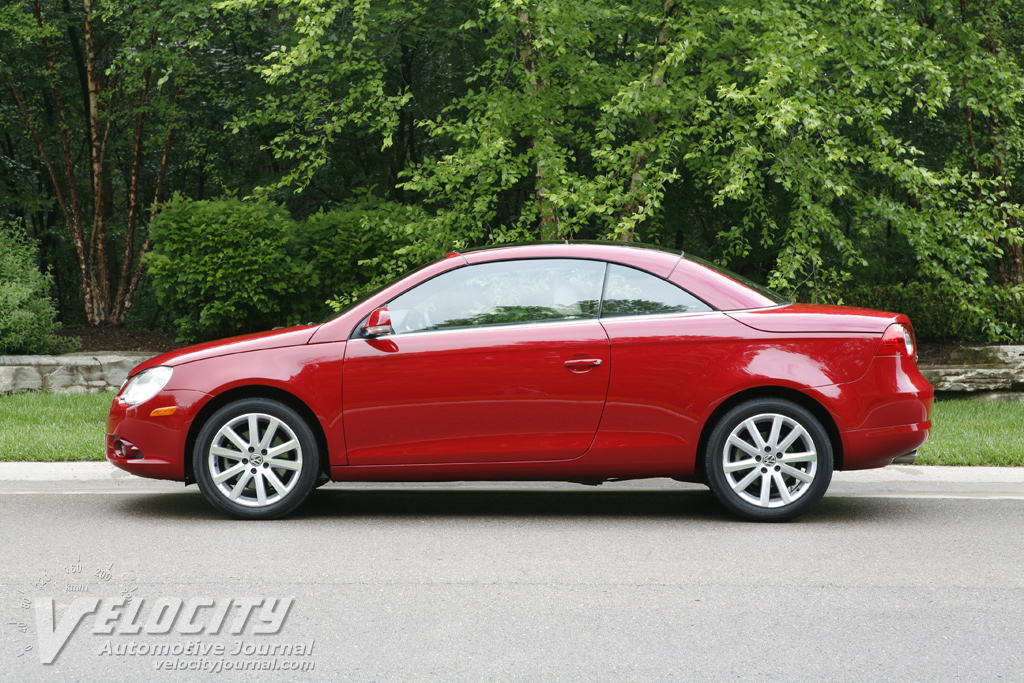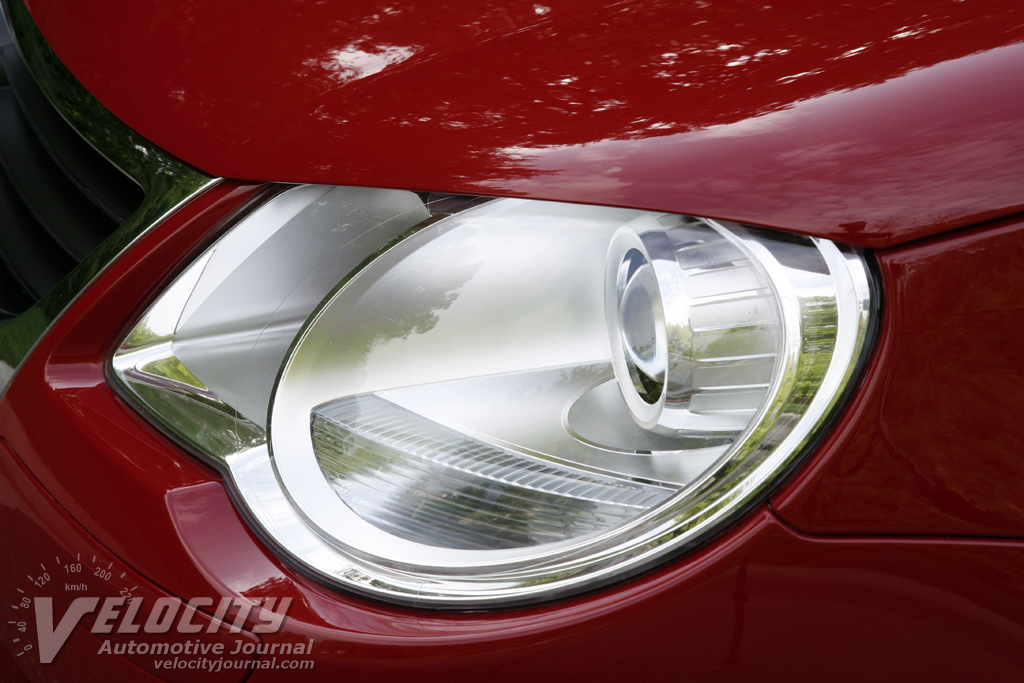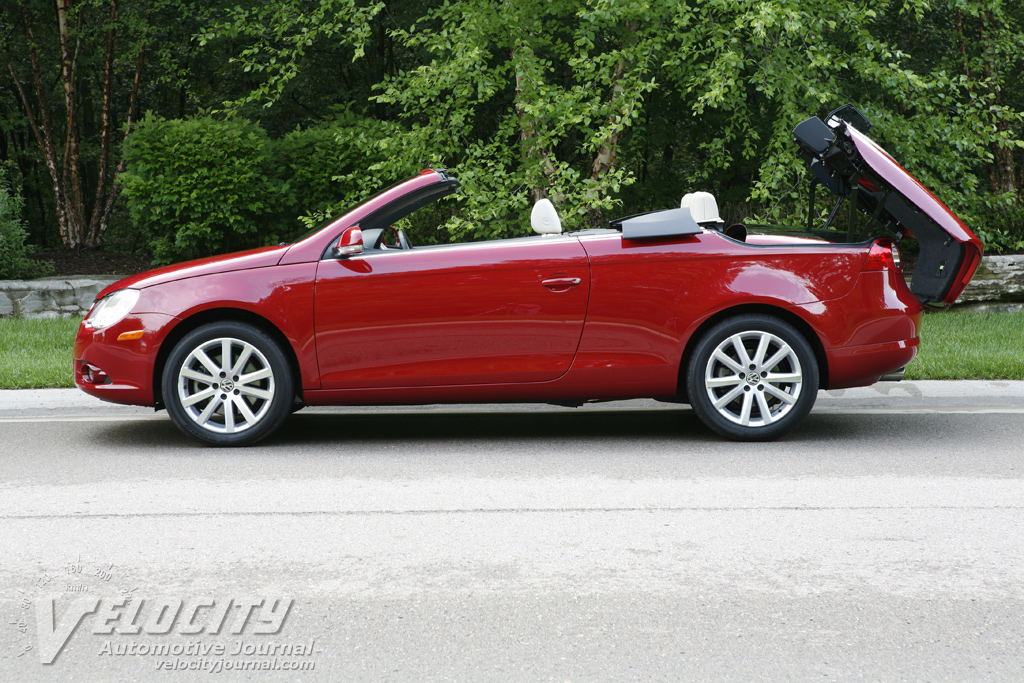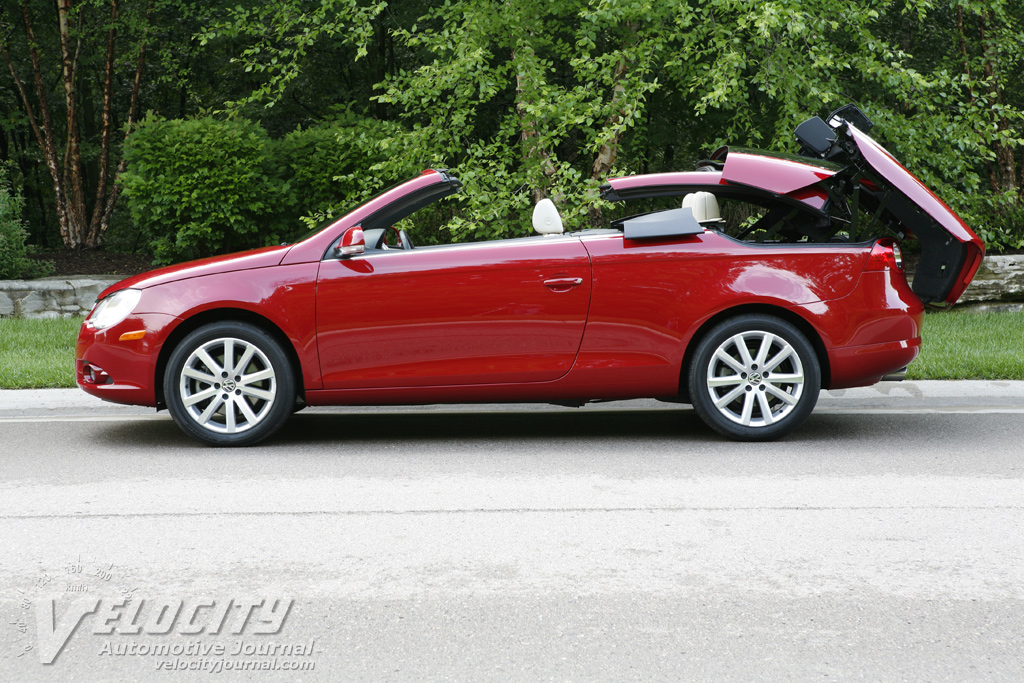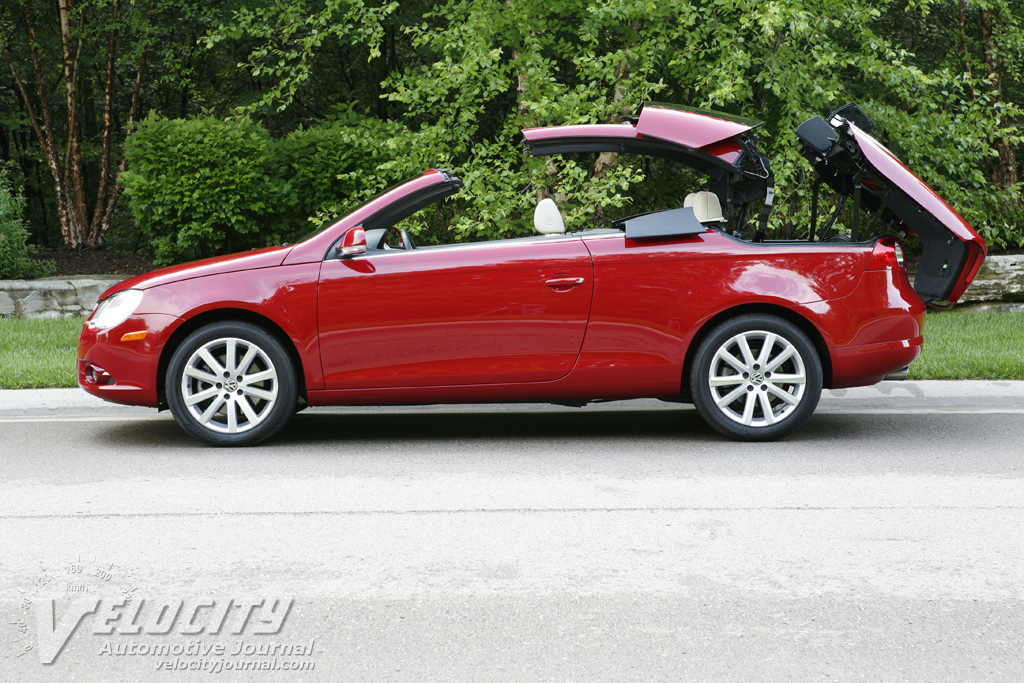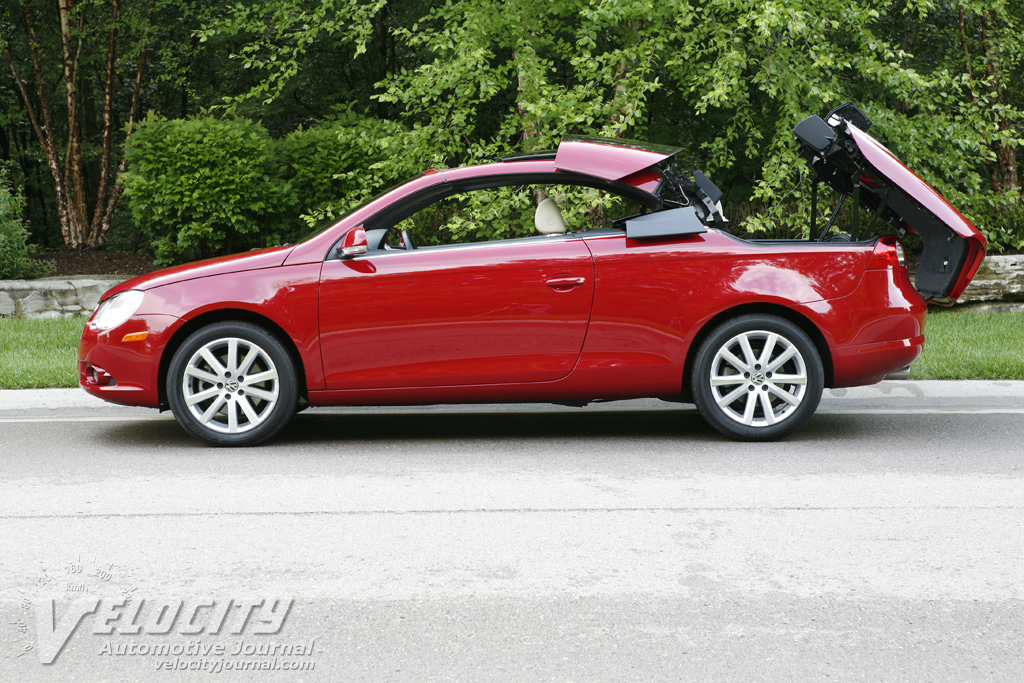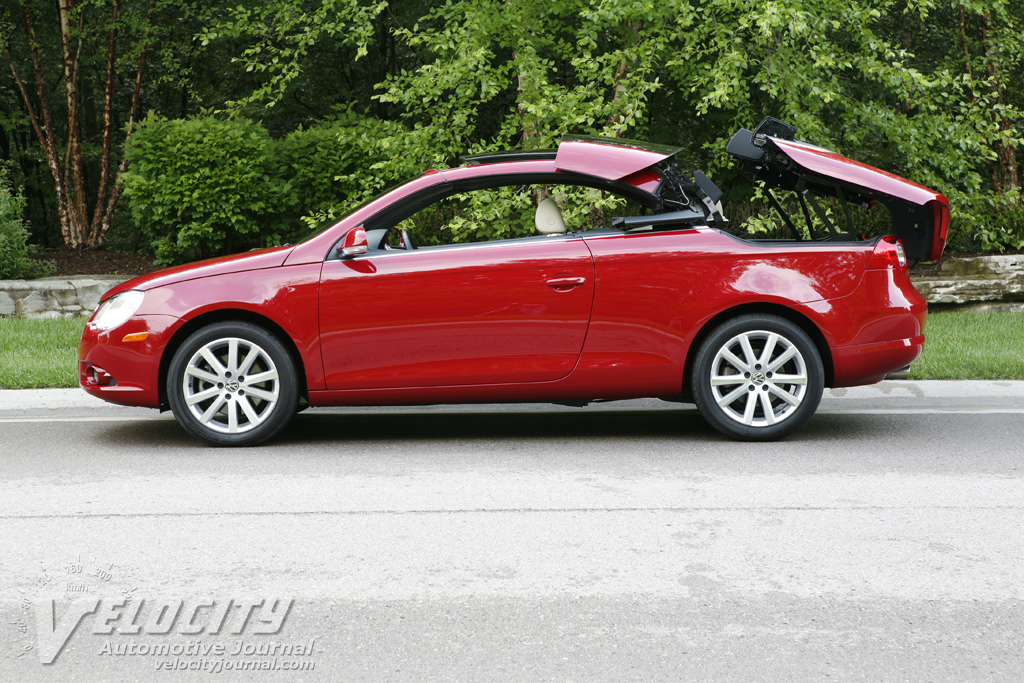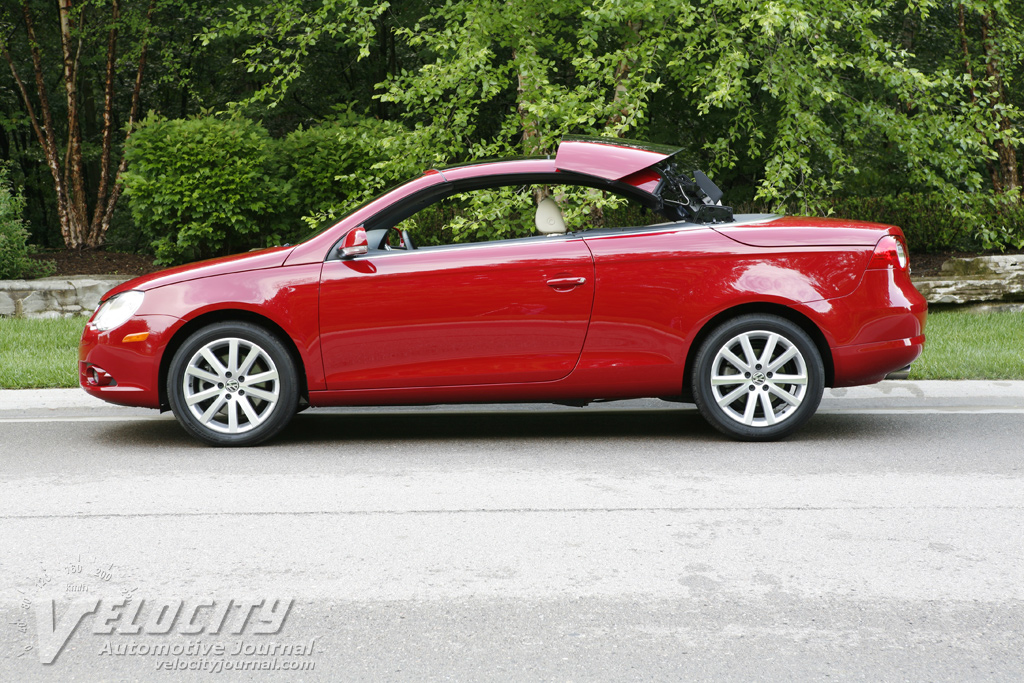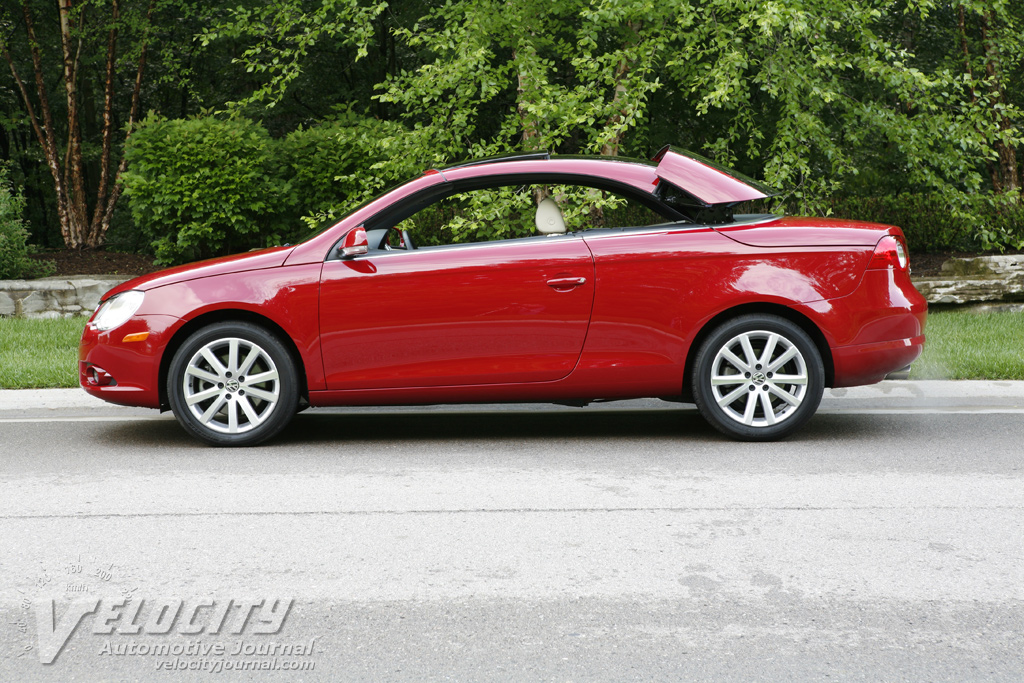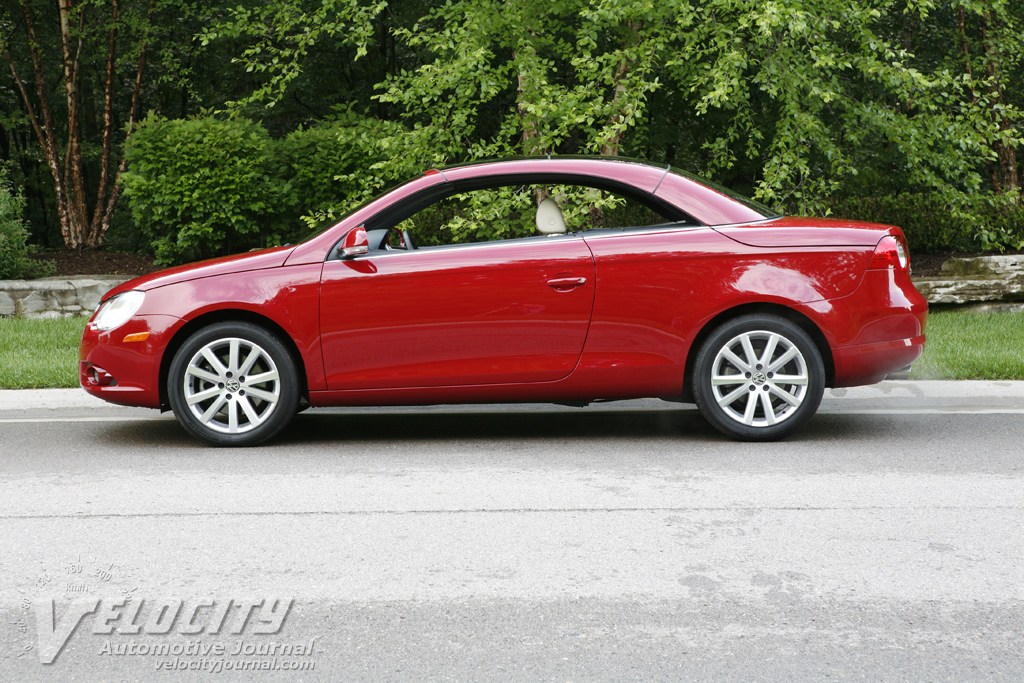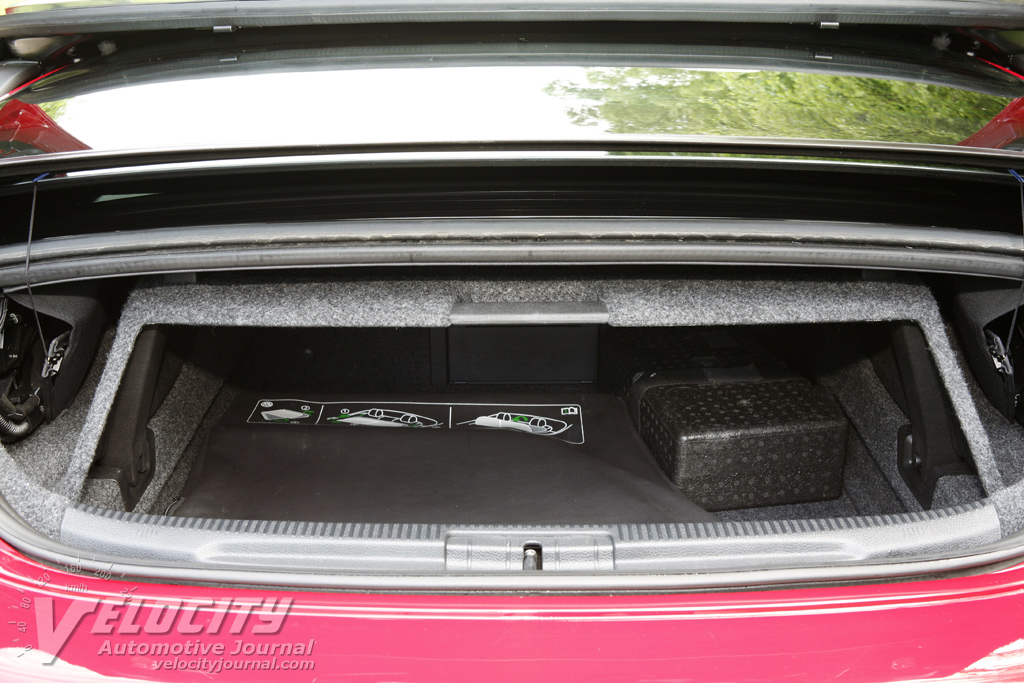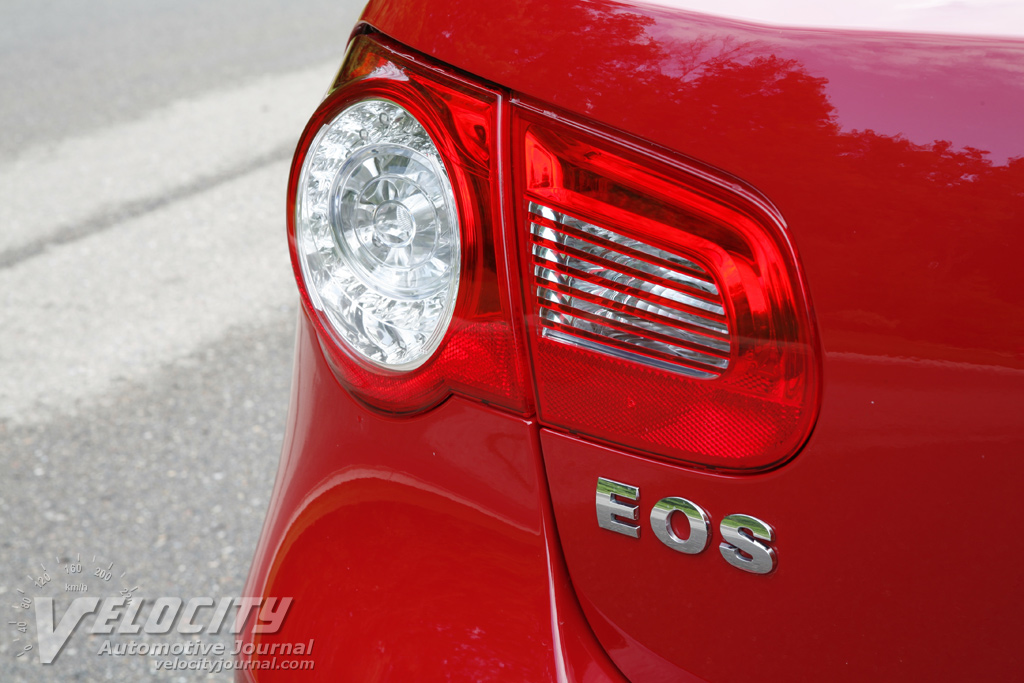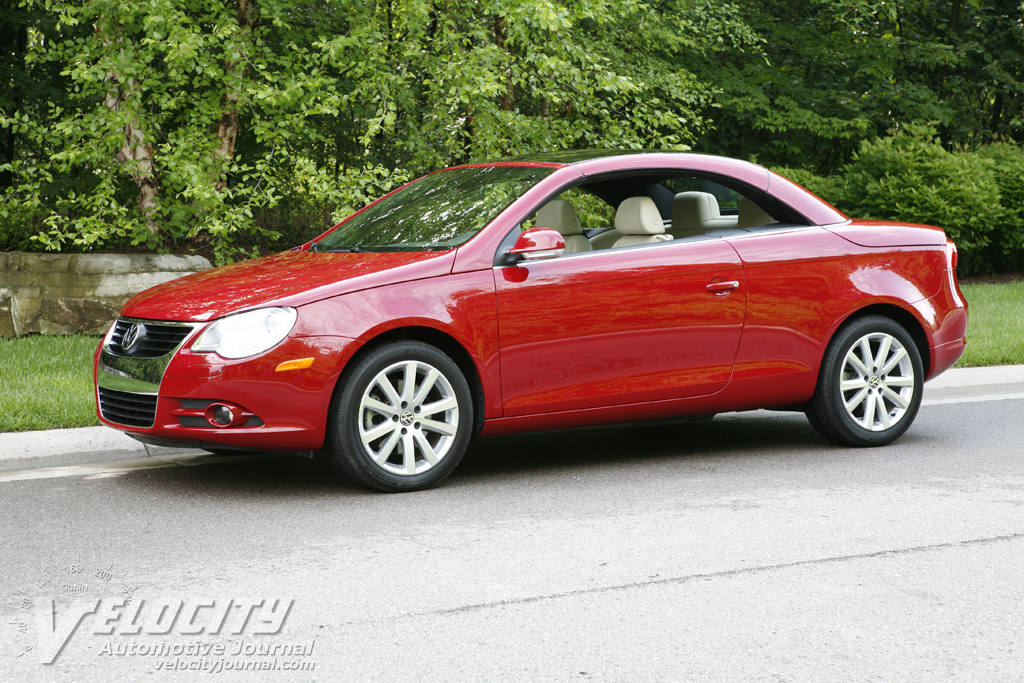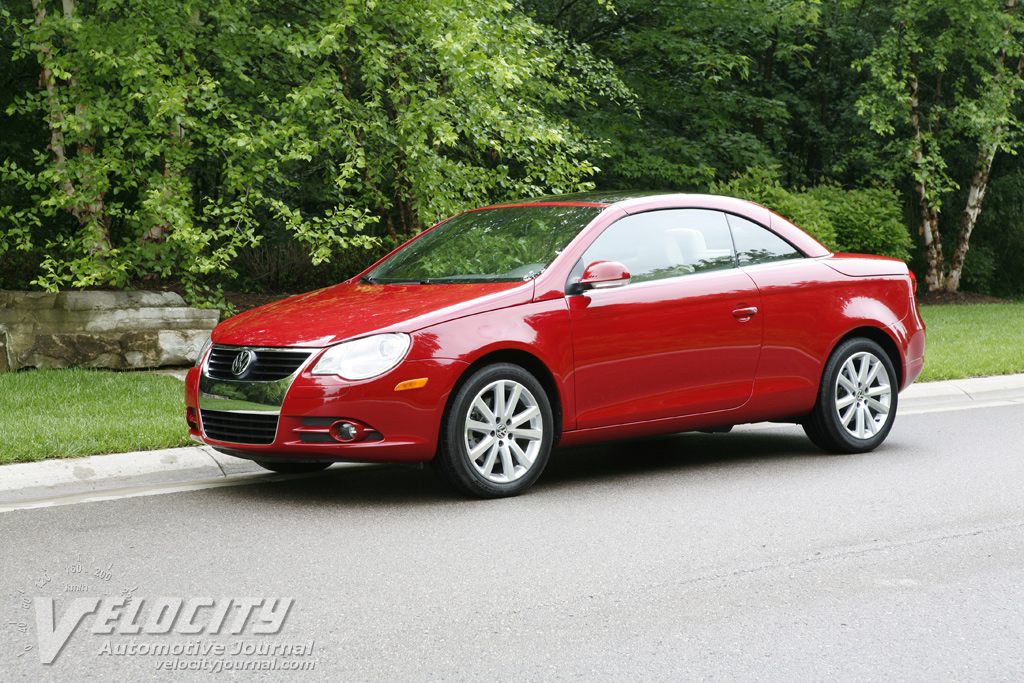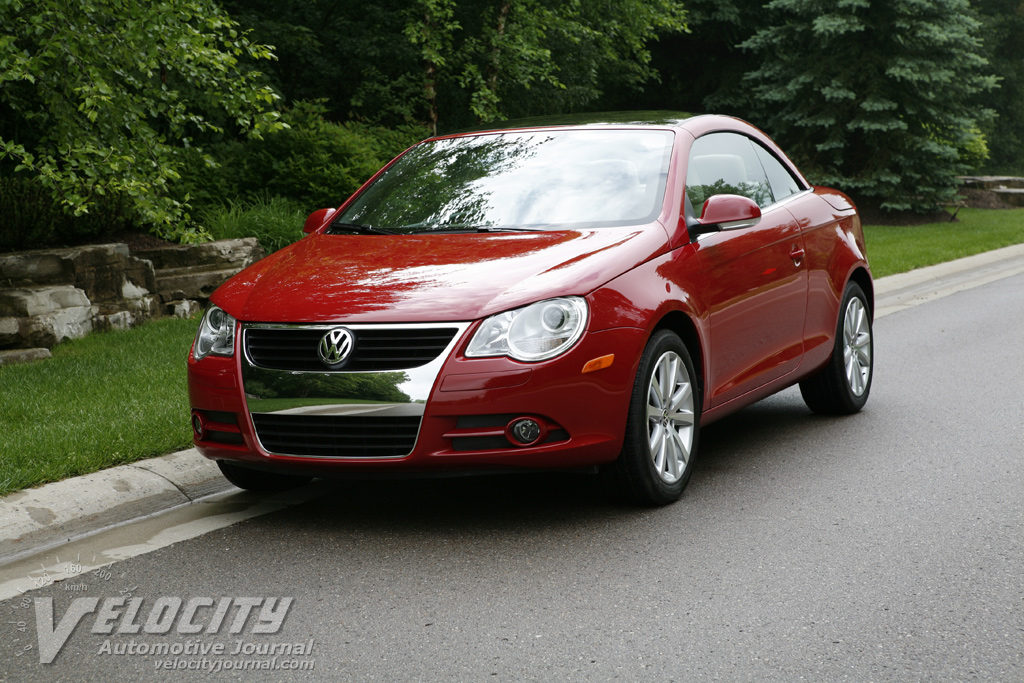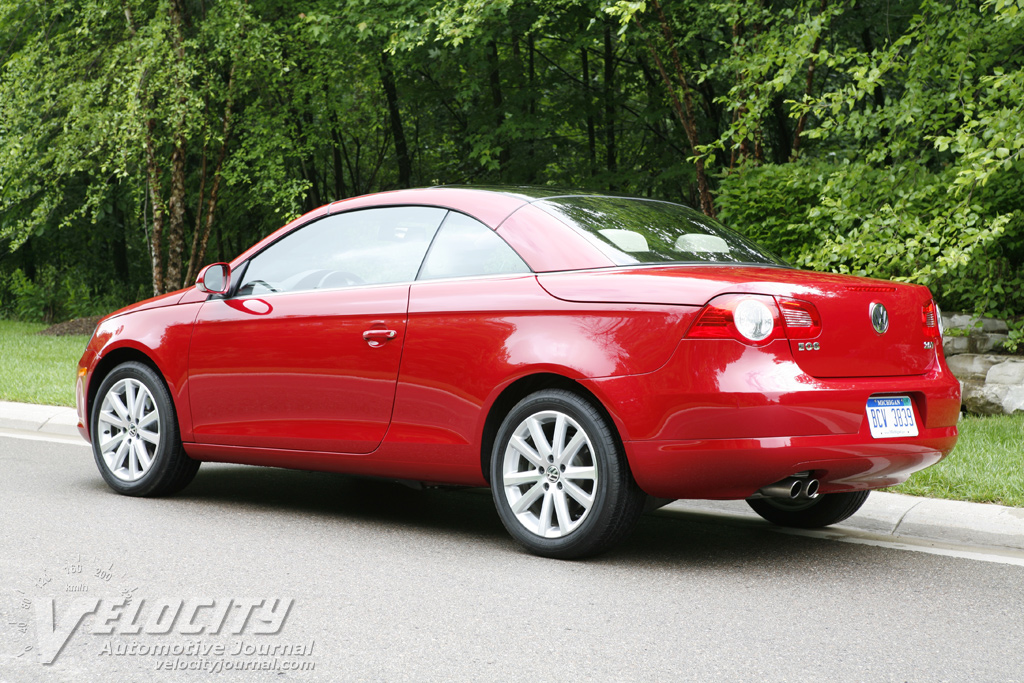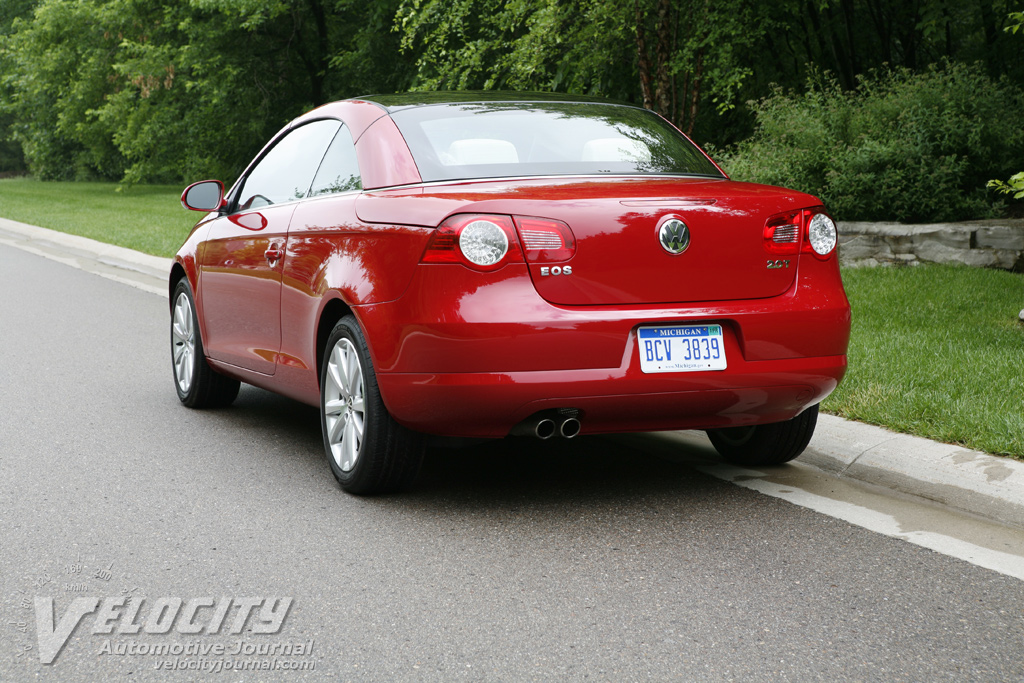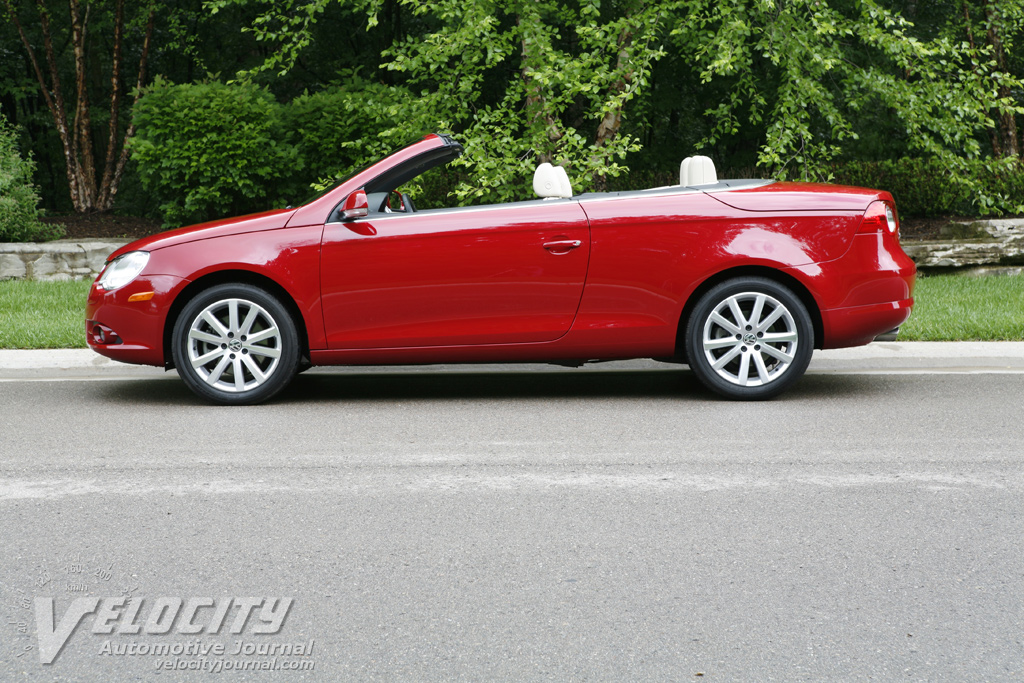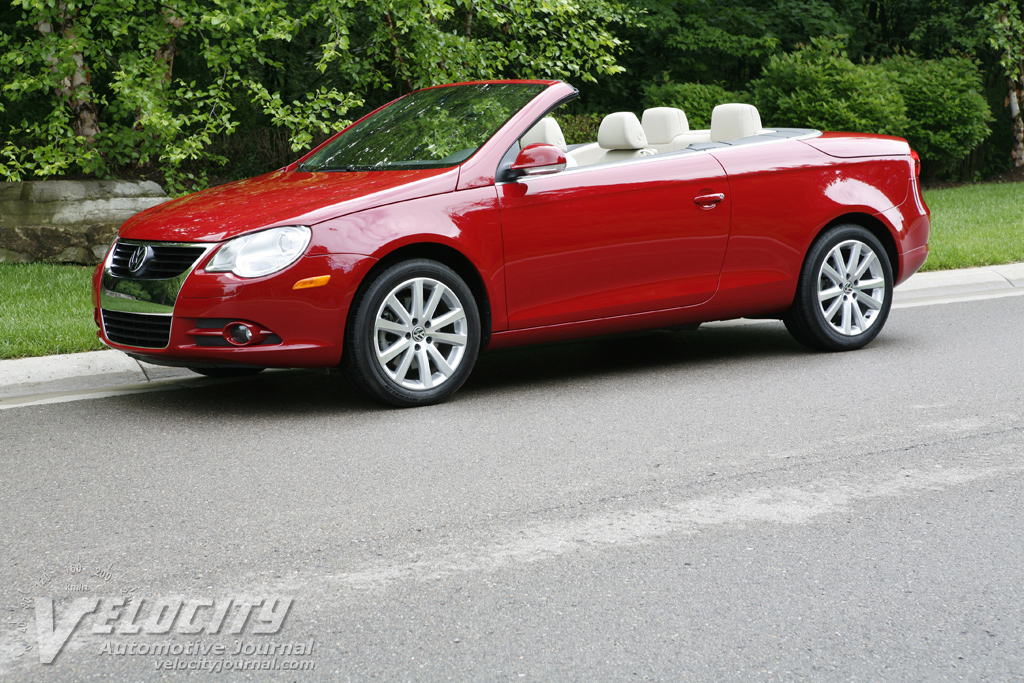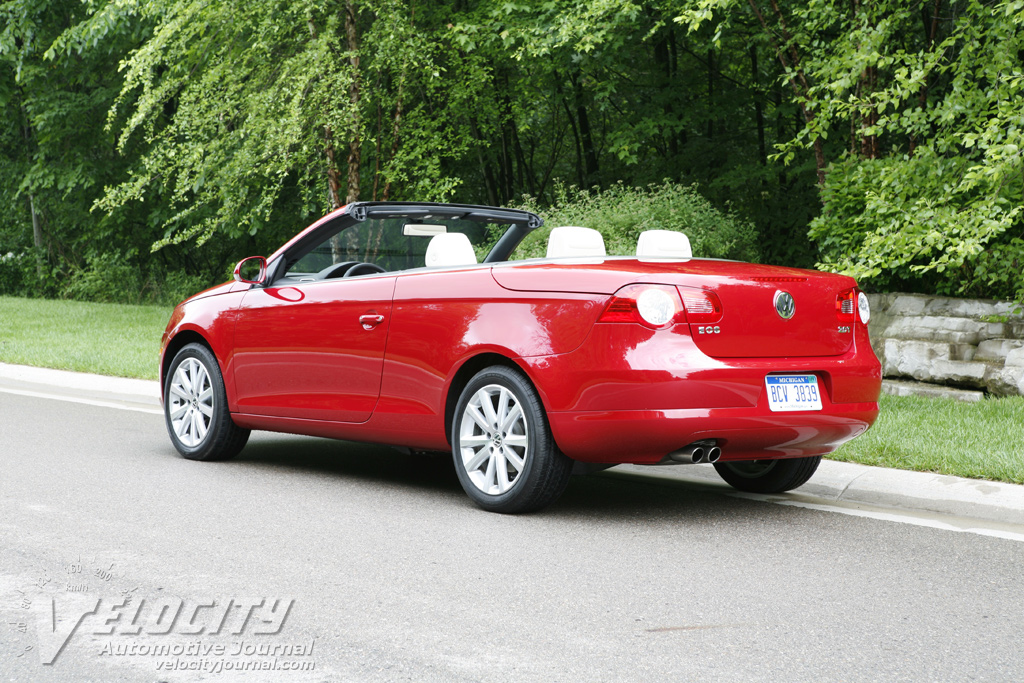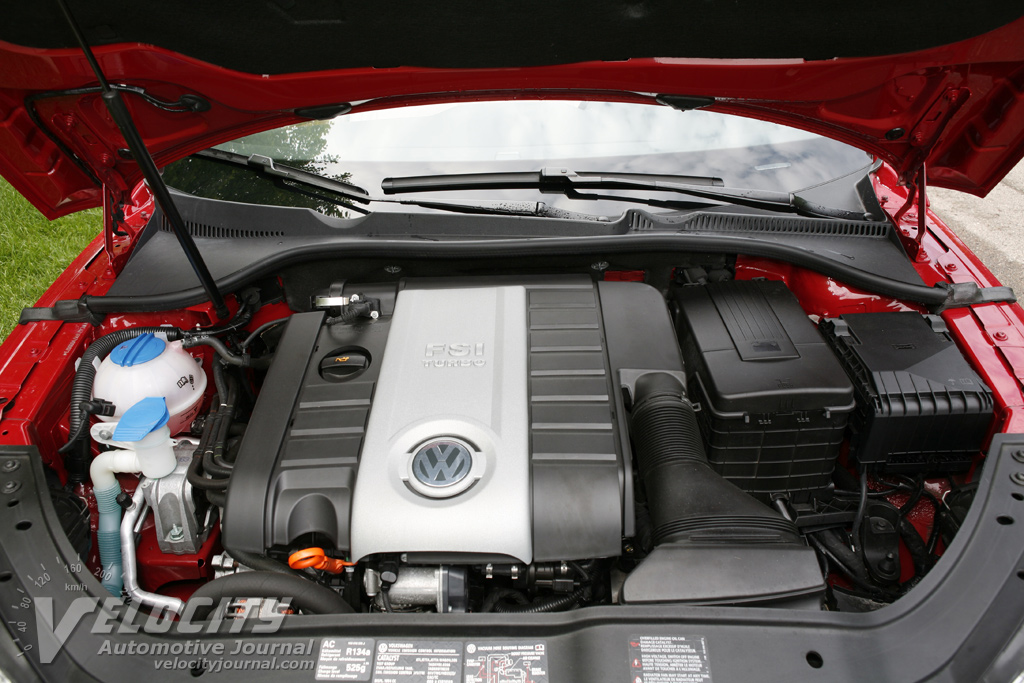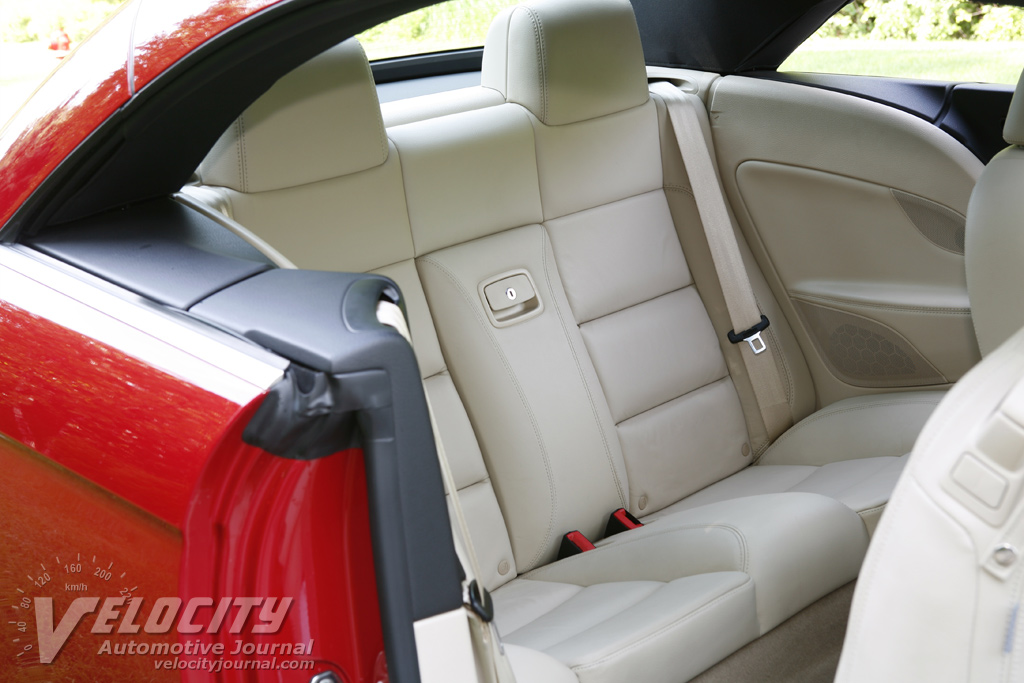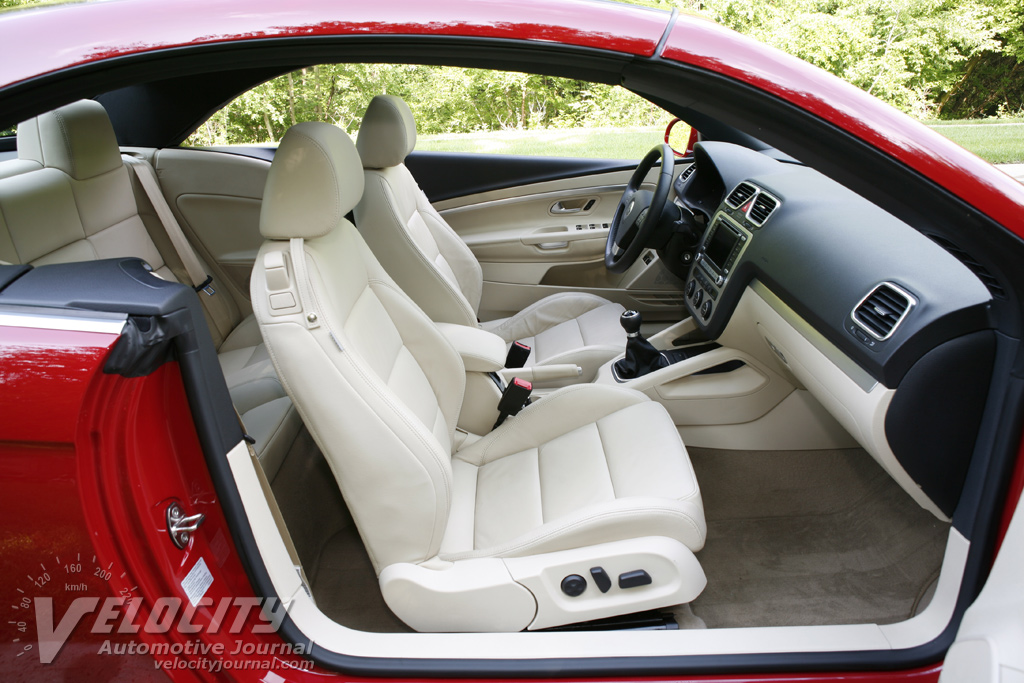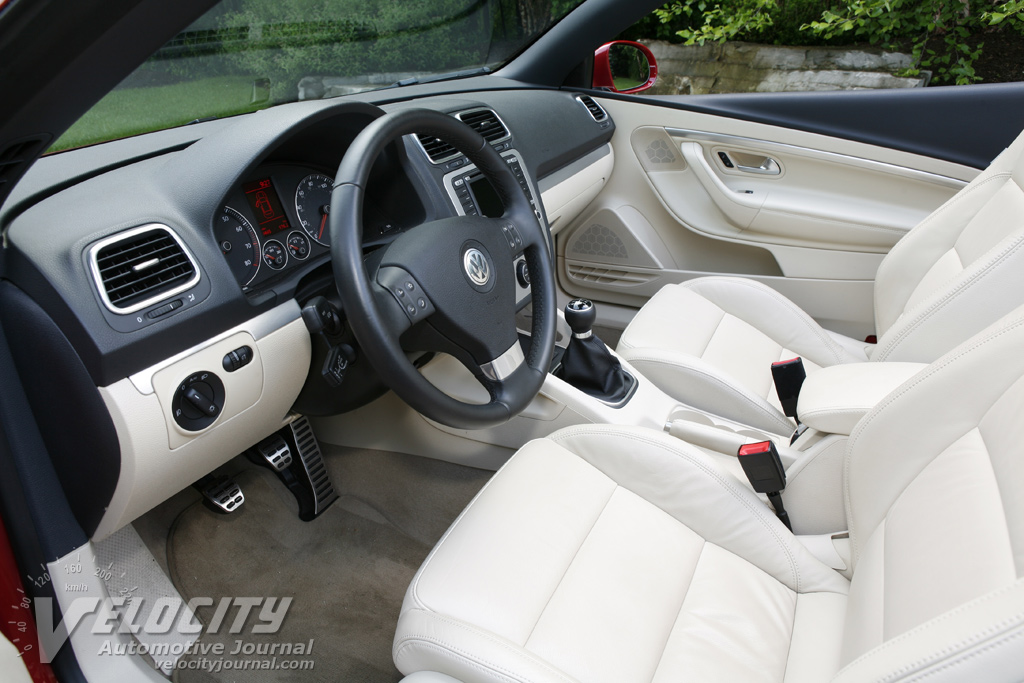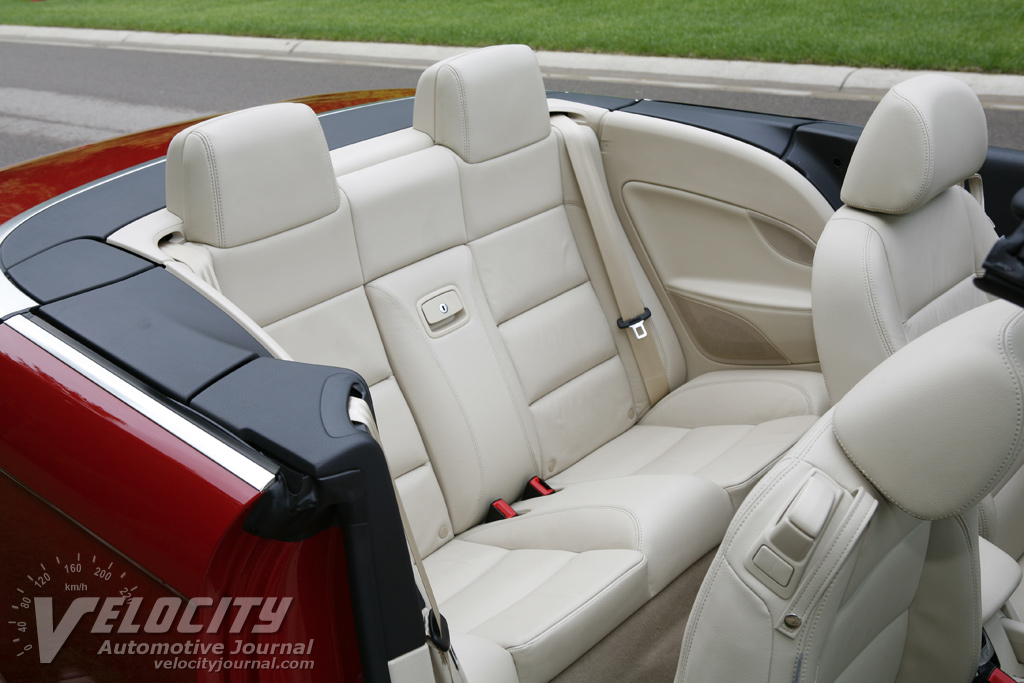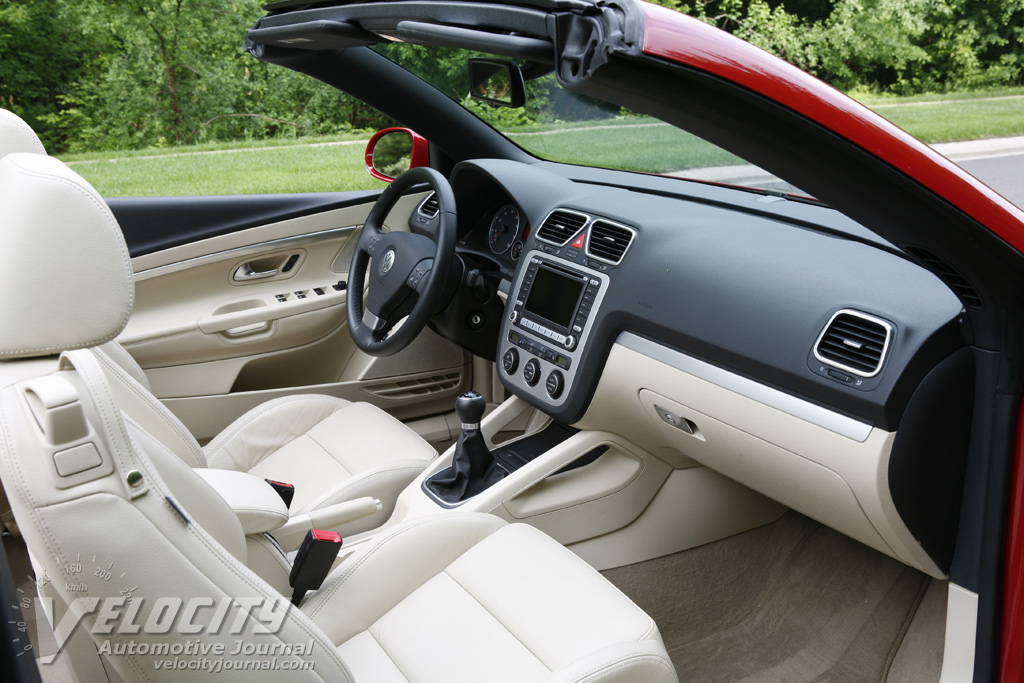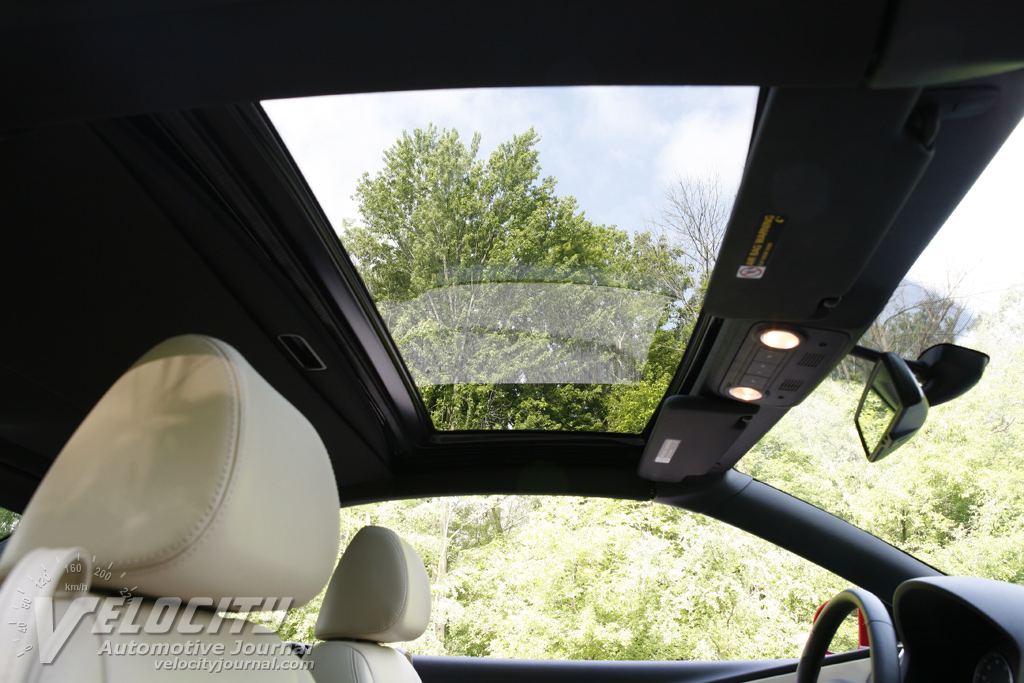Review: 2007 VW EOS 2.0T
06/04/2007
Shahed Hussain
Volkswagen has had the New Beetle convertible in its lineup for years, but somehow its whimsical styling never really caught on with customers. What VW needed was a more sophisticated, premium convertible, clothed in a stylish body. The Eos, introduced at the 2005 Frankfurt Motor Show, is already the most popular hardtop convertible in Europe. With its recent introduction in the US, VW now has a credible alternative to the Chrysler Sebring and Pontiac G6.
Of the three models available, the base Eos and Eos 2.0T are both equipped with a 200-bhp 2.0L turbo inline-4 coupled to a 6-speed manual. You can get the optional 6-speed DSG automatic transmission on the 2.0T. Choose the top level Eos 3.2L for the beefy 250-bhp VR6 and standard DSG transmission. Pricing is very aggressive, with the base Eos starting at just $28,110, while the 2.0T is $30,110 for the 6-speed manual or $31,185 with the DSG. Move up to the loaded Eos 3.2L and the list price jumps to $36,970. We tested a midlevel 2.0T with the 6-speed manual, the $3,690 Sport Package, and the $1,800 DVD Navigation with 6-disc CD changer. The total price on the sticker was $36,110, including the $695 destination charge. This is a remarkable value for a well-equipped German convertible (albeit assembled in Portugal). Most people who asked "How much?" were pleasantly surprised at the reasonable sticker price. If we wanted to save some money, we would skip the DVD Navigation system and save $1,800. It's tempting to consider the base Eos with its sub-$30K base price. Just keep in mind that there are no factory options, the seat upholstery is leatherette (vinyl), and the 6-speed manual is the only transmission. Most potential customers will consider the Eos 2.0T, with its variety of options and reasonable price as a more realistic choice.
There is no denying that Volkswagen designed a sleek, handsome convertible with the top up or down. Other motorists frequently gave the Eos second looks for its eye-catching styling. Our test vehicle was painted in an attractive Paprika Red with the Cornsilk Beige leather interior. VW is especially proud of the folding hardtop, a five panel kinematic masterpiece that neatly retracts into the trunk. If that weren't enough, VW managed to slip a standard power glass sunroof into the folding top. VW calls this mechanical marvel the CSC (coupe-sunroof-convertible). The top retracts in only 25 seconds, so you can confidently drive with the top down until you feel the first raindrops. To operate the folding roof, the ignition must be turned on, with the vehicle speed below 0.6 MPH; which essentially means that you should just pull over and stop the car first. Despite its complexity, the CSC worked without a hitch during our stint with the Eos. Both the power top and the sunroof are actuated by separate center console buttons. A yellow pictograph on the tachometer and a warning message on the instrument panel information display show when the power top is in motion. For convenience, a single switch raises or lowers all four windows simultaneously.
In typical VW fashion, the Eos boasts the most luxurious interior in its class, with superb material choices, combined with stylish design elements. Control stalks and switches click and rotate with the just the right effort. The black-grained dashboard and upper door panels are soft-touch plastic, while the steering wheel is covered in polished black leather. Polished aluminum trim abounds throughout the interior on the vents, dashboard, and door panels. All the aluminum interior trim, as well as the aluminum pedals are part of the optional Sport Package. On the instrument panel are large 160-MPH speedometer and 8,000 RPM tachometer gauges. In between are a smaller coolant temperature gauge and a fuel gauge. A red dot matrix information display shows vehicle status, audio, and trip computer information. The disc slot above the Navigation system display is actually intended for the navigation DVD, not the CD player one might expect. Instead, the 6-disc CD changer is hidden under the lid of the center console bin. The suboptimal CD-changer location makes it difficult to load or unload compact discs while driving. VW offers a choice of leather "comfort seats" (Luxury Package w/DSG transmission) or "sport seats" (Sport Package w/6-speed manual). We prefer the support and bolstering of the 12-way power adjustable sport seats (for both the driver and passenger), but only occupants with narrow backsides will fit. If the thought of sport seats in a convertible seems like an oxymoron, then an Eos equipped with the Luxury Package is for you.
Convertibles aren't known for much luggage space, especially when it comes to trunk capacity. Hardtops are especially demanding because of all the rigid pieces that must be carefully stowed under the trunk lid. With the top down, luggage capacity consists of a large slot under the roof segments, which will hold a couple of medium size soft duffel bags. Hard luggage (aside from a briefcase) is not an option, unless you are content to stash your suitcases over the rear seats. VW tacitly admits that road trips in the Eos are likely to be for two occupants. Why do we think so? Because the standard wind blocker (stored in the trunk) conveniently covers the rear passenger compartment. If you do take along a couple of friends, they actually get reasonable accommodations in the back seats, despite the slightly snug footwell. The cushions are scooped out for good support, but the seatbacks may be too upright for some passengers. A locking center pass-through will allow skis to fit inside.
Top down turbulence is part of the convertible experience, but the Eos keeps the wind at bay. For short freeway drives, we didn't bother with the provided wind blocker, because with the windows up, the noise isn't objectionable. Conversation at normal volumes is no problem at speeds up to 80 MPH, but we didn't try to go much faster with the top down. Somehow, minimal roll-over protection isn't a reassuring thought at triple-digit speeds. For long distance highway travel, we prefer the top up for a more relaxed (and safer) driving experience.
While a folding hardtop is no substitute for a true unibody roof structure, it is a significant improvement over conventional soft tops. Unlike fabric covered convertibles, which typically have a multi-layer cloth top over a hoop-like metal frame, the hardtop Eos has segmented steel beams that form a stiff roof structure when attached to the windshield header. Consequently, with the top up, the Eos is a remarkably rigid convertible. The doors close with a reassuringly solid thunk, although slight steering wheel shudders, plus some vibrations around the A-pillars occasionally betray the convertible structure. Of course, all the extra steel for the hardtop and the rigid body structure shows up on the scales, as the Eos weighs in at 3,505 lbs. For reference, a roughly comparable Jetta sedan is only 3,230 lbs.
Often the driving experience takes a back seat with some convertibles, but not so for the Eos, which has sharp handling. With its accurate, communicative steering, the Sport Package-equipped Eos will carve through corners with enthusiasm. Despite electro-mechanical power assist, steering feel was comparable to conventional vacuum or hydraulic assist systems. We didn't probe its handling limits on public roads, but the Eos is a nimble handling convertible that lives up to its German heritage.
Base Eos and 2.0T models are equipped with 16 x 7J alloy wheels and 215/55R16 all-season tires. All Eos models have a modified MacPherson struts in front, a 4-link rear suspension, with anti-roll bars front and rear. The braking system consists of disc brakes with 12.3" diameter front rotors and 11.3" diameter rear rotors. ABS, Brake Assist, and ESP (Electronic Stability Program) are standard. Brake pedal feel is slightly spongy, but subjective performance is more than adequate. Our tested 2.0T had the optional Sport Package, which include 17 x 7J "Avignon" alloy wheels shod with sticky 235/45R17 Michelin Pilot HX MXM4 tires. Optional "Samarkand" 18 x 8J alloy wheels with 235/40R18 tires are available as a $400 upgrade with the Sport Package, but we think that the ride may suffer with such low profile tires. For Midwestern roads, the standard suspension tuning and 17-inch wheel/tire combination provide a compliant ride; but owners driving on smooth Sunbelt roads may consider the 18-inch wheels a worthwhile upgrade.
VW equips the Eos with a standard 2.0L turbocharged inline-4, or an optional 3.2L VR6 6-cylinder engine. Both transversely-mounted powerplants drive the front wheels via a 6-speed manual or an optional DSG 6-speed automatic. Throttle response just below 2,000 RPM is unexceptional until the turbo comes on boost; then all 207 lb.-ft. of torque show up from 1,800 to 5,000 RPM. Peak power of 200-bhp is maintained between 5,100 to 6,000 RPM. Although the turbo fattens up midrange response enough that you rarely need to rev above 4,000 RPM, this lively inline-4 is quite happy to zing to the 6,500 RPM redline on each shift. The 6-speed manual has a comfortable ball-shaped knob atop the shift lever. With its spring-loaded detents, the transmission just clicks into each gear. Unless you commute regularly in rush hour traffic, we would recommend the 6-speed manual simply because it's more fun to drive. VW claims a 0-60 MPH time of 7.4 seconds for the Eos 2.0T, with a top speed of 130 MPH. Interestingly, the DSG transmission offers identical performance numbers, so performance doesn't suffer if you opt for the automatic. Where the 6-speed manual has a slight edge is in its 32 MPG EPA highway fuel consumption, vs. 31 MPG for the DSG-equipped Eos. City fuel consumption is identical at 23 MPG for both transmissions. We averaged 24-26 MPG in mixed city/highway driving, mostly with the top down.
We think VW has really hit the sweet spot in the mid-price convertible market. A hardtop convertible from a German manufacturer starting below $30,000 is quite an accomplishment. The integral power sunroof separates the Eos from all other competitors, regardless of price. Although the Chrysler Sebring and the Pontiac G6 have lower base prices, the Chrysler earns demerits for its awkward styling, while the Pontiac can't match the Volkswagen's extensive option list. Neither competitor compares with this Volkswagen's impeccable interior design and materials, or its available leading-edge technology. Naturally, VW charges a hefty premium for the Eos, but includes features that are unavailable on its less expensive American rivals. In reality, the Eos is a more attractive alternative to the canvas-roofed Audi A4 Cabriolet (base price: $39,100). So if you can spare the extra cash for the VW vs. the Chrysler or Pontiac, but don't want to spend more for an Audi, then the Eos is your convertible.

